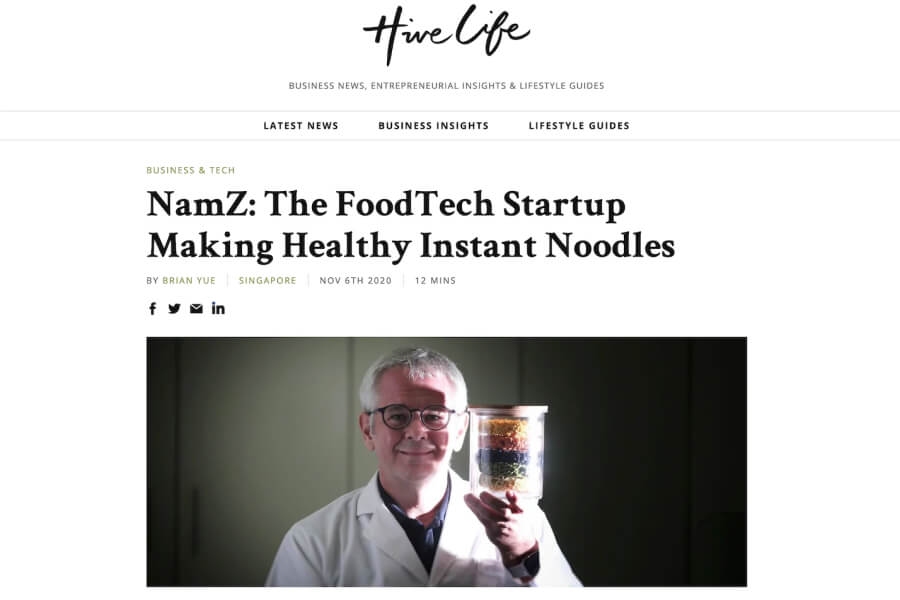BY BRIAN YUE. NOV 6TH 2020. 12 MINS
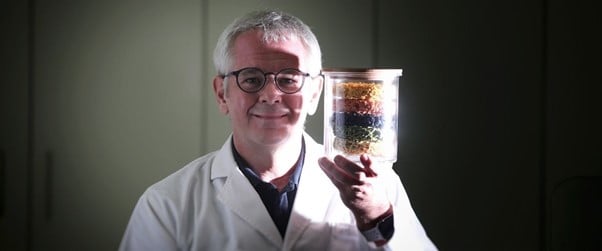
NamZ CEO Chris Langwallner has embarked upon a quest to change everything we know about food – including creating healthy instant noodles that taste just as good as their high-sodium, low-nutrient counterparts.
Chris Langwallner is the co-founder & CEO of NamZ, an innovative food science company established in Singapore in 2014 with a focus on redefining food sustainability by creating unique, healthy food products such as NoodleZ, a healthy variant of instant noodles. Earlier this year, NamZ started WhatIf Foods, a consumer brand tasked with creating all sorts of convenient food products that are both sustainable and tasty. Prior to founding his own company, Chris spent over two decades working for some of the biggest names in the food ingredients industry. So, we decided to get his career-honed thoughts on the future of food sustainability,and discover the reasons why he became disillusioned with the products he was being asked to make in the first place.
Hi Chris. What led to you becoming “disillusioned” with the food industry?
I’ve been a professional in the food industry for about 30 years now, and the most frustrating thing I’ve seen in these past 30 years is that we have been driving food and agriculture towards key performance indicators that were only relevant shortly after World War Two as a means to feeding a hungry population. We haven’t adopted new indicators, and we haven’t been thinking clearly about how to adapt to current needs. The planet is harassed by us because of the way we pollute the planet through greenhouse gases, through the withdrawal of freshwater reserves, and all of that really frustrates me.
Was that the main motivation for you to start NamZ?
Well, on top of all that, I also became a father to young children. In the past, I was involved in making deep-fried products such as potato crisps, instant noodles, and other foods that essentially appeal to kids because they taste good. I’d come home after work and tell my kids not to eat the products that I was involved in creating. I thought to myself, there’s got to be a better way of doing this. Why are we deep-frying instant noodles? How can we take deep-frying out of the process? Asking these questions early on was what got us going. My co-founder and I spent three quarters of a year coming together to identify food projects that had a supply chain issue, a sustainability issue, or unmet needs. Today, WhatIf Foods enjoys the fruits of that labour by using our technology to bring products onto the market.
Essentially, we’re motivated by looking at what doesn’t work. The agro-food industry is a well-greased machine that works very efficiently – which is why it’s incredibly difficult to change. There are so many parties who just want to leave things the way they are because it churns out nice profits, but we haven’t asked ourselves if we’re doing the right thing. The system is efficient, yes, but it kills us, it kills the planet, it kills communities, and it makes me very angry whenever I talk about it. This became a motivation for me to start the company.
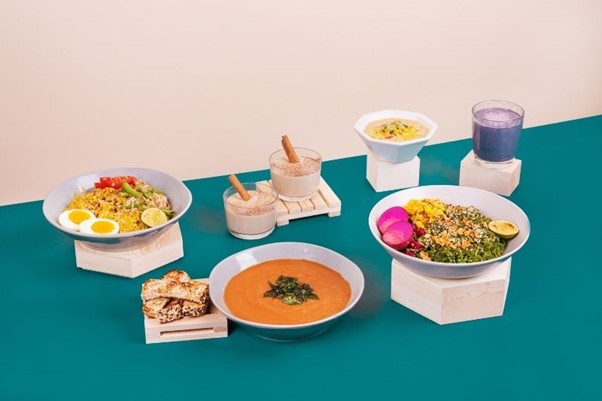
On the topic of sustainability, we’d love to know what food sustainability means to you.
Sustainability to me is not about doing things a little more green, being a little more energy efficient, or increasing corporate social responsibility. That isn’t sustainability, that’s just greenwashing. What sustainability means to me is stepping back from what the system currently does, reconsidering the right thing to do, and then identifying profitable opportunities to drive capital towards that opportunity, reinventing the system in the process.
How do you think you can convince people that it matters?
What we are doing is basically identifying strategies that can address incredibly urgent needs for the planet, our consumers, and their communities. Today, about 2.6 billion people are still directly connected to our agriculture. 75% of them are the poorest of the poor; if we take their livelihood away, they will literally die. If we don’t take care of these communities, this inflection point is going to kill more people than COVID-19. Also, 53% of their arable land is degrading or has already degraded, and this is happening at an unprecedented speed; 35 times faster than ever seen in history before. Why are we leaving so much of our planet behind?
What is the biggest challenge in food sustainability right now?
If you look at the numbers, we only use a dozen crops and a handful of different species of animals to make 75% of all food that is being produced. Everything is consolidated and streamlined towards just a few items, and we have to recognise the fact that we’ve lost agrobiodiversity. The entire system is collapsing and the planet is billing us with greenhouse gases, climate change, erratic weather experiences, floods, droughts. On top of that, millions of people are considered climate change refugees today.
So the question is, what can we do with degraded arable land that will allow these farming communities to diversify their income and become more resilient against adverse events? If we grow these crops on degraded arable lands, is there then an opportunity to grow crops that are beneficial to human health? Can we actually diversify the ingredients that we intake? We want to leave the choice to consumers to say: These two products might be quite similar, but if I buy this product, I’m contributing to a good cause. That’s our call to action: asking every single consumer whether they want to be part of creating a better world, one step at a time.
Can you explain how WhatIf’s Future Fit crops are selected?
Research indicates that humanity knows of 300,000 plant species fit for human consumption. Yet, in today’s day and age, 60% of the calories that people consume on this planet are derived from three crops: corn, rice, and wheat. We have to pause here for a second and realise that this is insane.
There are particular traits that crops have to display in order to qualify for Future Fit crops. Let’s look into what’s wrong with our diets. We aren’t eating enough plant-based proteins, and we aren’t consuming enough micronutrients. We don’t have enough fibre in our diets, so our microbiomes are suffering. So, we first select crops that we think are holistically beneficial to human health. Then we break it down further: can these crops grow on degraded arable land with very little water and very little input material? If they are, then they become very affordable for farmers to grow, because the land we want to grow these crops on has already been degraded. This process is something that we have devised over the years, and the results of this process are Future Fit crops.
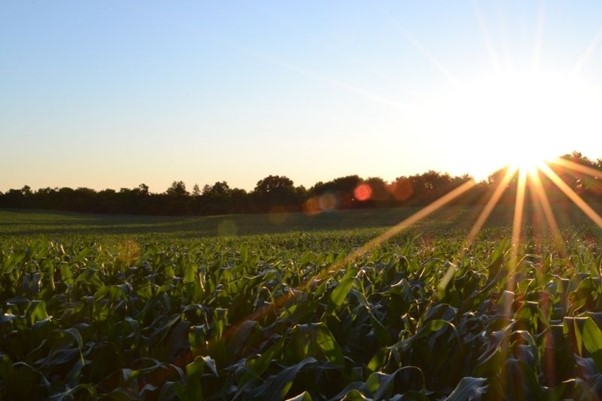
Can you explain how your products taste just as good as their regular counterparts?
For a number of years now, we have investigated how our brain and taste buds recognise fried flavours in a concept called instant noodles, and what it is that actually makes instant noodles taste like, well, instant noodles. We reasoned that if the deep-frying oil used in making instant noodles was actually the defining factor that was so compelling to consumers, then logically we should see consumers walking into fast-food restaurants such as KFC, and asking to buy 250 millilitres of deep-frying oil. But we’ve never seen that. Honestly, deep-frying oil is quite disgusting, it’s something that we would never put in our mouths, and so we knew there had to be something else behind it.
We started to think about what sort of molecules are needed in order to fool the brain into believing it’s consuming something that is deep-fried, in other words, finding a way to recreate the same pleasure, excitement, and experience that we get from fried foods in our sensory organs. As a direct-to-consumer brand, we are always communicating directly with our customers, and quite frankly, nobody has complained that our food doesn’t taste right. That’s the funniest part of it all, the fact that fooling the brain actually works very well. We’ve essentially come up with an ingredient solution that goes into our dough and helps consumers to identify themselves with something that they derive a lot of pleasure from, while also avoiding the huge amounts of calories that those other products contain.
How has COVID-19 impacted the food industry?
Before COVID-19, we had a number of engagements with other industry players. But COVID-19 changed things, and this wasn’t a surprise to me because I’d been through the same thing after 9/11 and the 07/08 financial crisis. Food manufacturing companies rarely spend effort, time, brainpower, resources, or money on anything new during a recession. Particularly with COVID-19, we’re seeing a situation where players are worried about whether they can get their raw materials into the factory – supply chain challenges. They’re worried about whether they have enough people coming to their factories to switch the machines on. There are some labourers who want to stay at home with their families because they know that if they catch COVID-19, they won’t have access to healthcare.
These are all hardcore aspects of things that have changed during this pandemic, but at the same time, we’ve held up a promise that we made 18 months ago to launch our own consumer brand, and we pushed very hard to deliver on that promise. We actually launched WhatIf Foods during the lockdown period in Singapore, and it was a huge team effort that we essentially finished from our living rooms. We even bought our first packaging materials from IKEA because we didn’t have other supply chains available to us. It was tough, but it’s really uplifting to get feedback from customers who have reached out to us, it’s fantastic.
In your own words, what is the “Nutritional Paradox”? How do you think food sustainability can keep up with the growing worldwide demand for food?
The Nutritional Paradox is an initiative that I started about two years ago, and we coined this terminology because we are living in a day and age where the results that we produce in our food system are paradoxical in nature. We’re already producing enough calories to hypothetically feed 10 billion people, and so the production capacity of the planet is not the problem. It is the way we deliver these calories for 10 billion people that is the biggest problem. There are several solutions we have thought of, such as reducing food waste and overeating. 2.6 billion people on this planet today are overweight or obese, and they are just eating too many calories. If we can divert some of these calories to people that actually need them, we can resolve a huge imbalance there, hopefully without too much conflict or pain.
The Nutritional Paradox is an attempt to really go into the details of what’s wrong with the food industry, and there are essentially three aspects. Planetary health, lack of nutrition, and how we manufacture food. We are also observing things like hidden hunger and other nutritionally challenging situations. If you go to a fast-food restaurant in Hong Kong and eat your 2000 calories there, then you spend much less money on fruits and vegetables to feed yourself. That’s just wrong. Today, 70% of arable land is used to feed livestock that makes up only 17% of all the calories that we consume. Talk about inefficiency!
When I’ve approached so-called specialists in the food industry in the past, people that work in areas like quality control or supply chain management, I’ve found that hardly anybody cares enough to think deeply about these issues. Many manufacturers today don’t even know where their products come from, let alone who actually worked for it, the farmers who go out to sweat in the sun for the food that we consume. That became the motivation for us to explain the Nutritional Paradox properly. And so I said, let’s make a video, let’s write a white paper so people can actually understand the paradox, and then we can have a conversation as to what technologies we can actually use to resolve these issues.
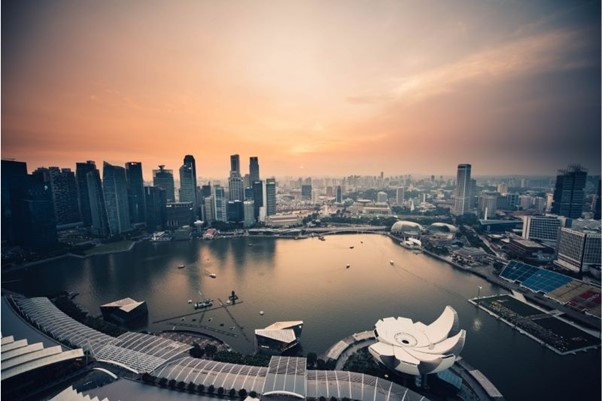
What are some of the biggest misconceptions that industry players and consumers have about food sustainability?
The biggest misconception that consumers have is thinking that their individual actions don’t contribute to change. They do! People don’t fully understand the huge power they have to change a system. Take greenhouse gases as an example. I’ve consumed a lot of meat in my life, but a couple of years ago, I became first a flexitarian [a person who is primarily vegetarian but occasionally eats meat or fish] and later on, a vegetarian. By making this switch, I personally save the planet from CO2 emissions equivalent to 1500 litres of petrol every year. At the same time, I’m also saving 1 million litres of water that can then be used for growing vegetables to feed three or four people on a daily basis.
These are massive levers that we as individuals possess, and if more of us actually pulled these levers, it would change the world. I hope that consumers in the future will be educated enough to understand that their purchasing decisions make a difference. That’ll definitely be one of the biggest challenges going forward.
As for people in the food industry, what frustrates me the most are these sustainability reports that are printed once a year, all of them containing these super flashy, glossy, colourful pictures. The reports talk about certain initiatives that companies are taking in regards to improving food sustainability, but as I flip through them, I just feel uneasy. They might talk about doing things a little more transparently, or doing a bit more for farming communities, but most of them aren’t tackling the core issues, which are lack of biodiversity and degrading arable land. If we want to stop deforestation, we have to start finding ways to use degraded arable land. Every minute, 23 soccer fields worth of arable land are degraded. In the very same minute, we lose 30 soccer fields worth of primary forests from deforestation. That’s just not right.
What are some trends you see in food sustainability in the next 5-10 years?
There’s a very bright future on the other side of COVID-19 because I believe that the virus has shortened a concept that we call “time to harm” almost to zero. We won’t have to explain to consumers that if they eat the wrong foods today, they might fall sick sometime in the future because they see it right now. After COVID-19, I also don’t think we’ll have to tell people that what you eat is who you are. What we have to do is to keep educating them on their individual food choices; helping them understand that their food defines who they are and what planet they are living on. Making this connection is the next big thing to get across.
There is also a growing trend of connecting with consumers through the digital world, and that includes listening to their concerns and being responsible for answers that are coming out. People can’t hide anymore. Brands can’t hide anymore, because everything’s very transparent on the Internet. You’re being slaughtered if you don’t do the right stuff on social media, and honestly, I see that as a positive.
And finally, we’ve seen the rise of a movement led by Generation Z, which calls upon us leaders to create a better future for them. I think that is definitely going to change the world as we see it today because it means that our human value systems will have to be redefined. We are living in a time where there is a philosophical conflict going on – there’s an old system and a new system, and the new system is taking on the old system and wants to do things differently. When I speak to my kids about sustainability, they don’t ask what it is – they ask, “what can we do about it?” It’s a totally different conversation. We hope that purchasing behaviour mirrors the new value systems that have been created, and in fact, we see that happening already.
What’s next after COVID-19 for WhatIf? What do you see as the future of your company?
The big idea behind WhatIf Foods is to be experienced a billion times. Once we have been experienced a billion times, we will have created economies of scale that allow us to impact the food industry the way we want to, and so that is a huge driver for us. Obviously, it would take too long to have a billion experiences in Singapore alone; the population isn’t big enough, and so we need to go overseas. We have several initiatives and several partnerships in the making that will help us get into different markets. Moving forward, not only are we trying to horizontally and vertically further develop the options that WhatIf Foods has, but we will also be looking to expand regionally and internationally. There’ll be a lot of moving parts, but I couldn’t be more excited about the journey ahead.
Explore more at whatif-foods.com and follow them @whatiffoods.

